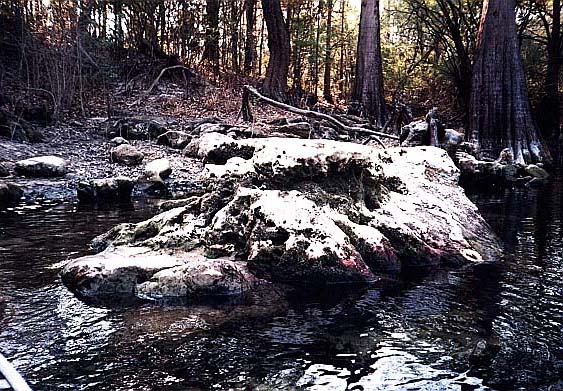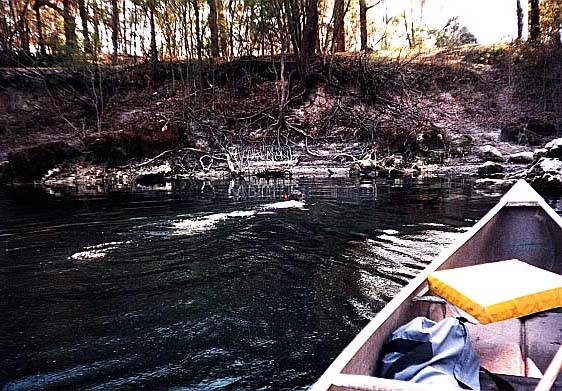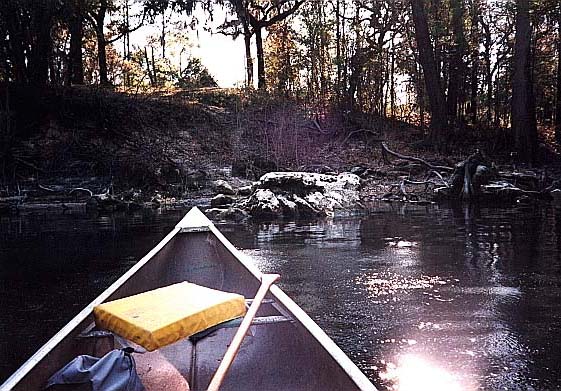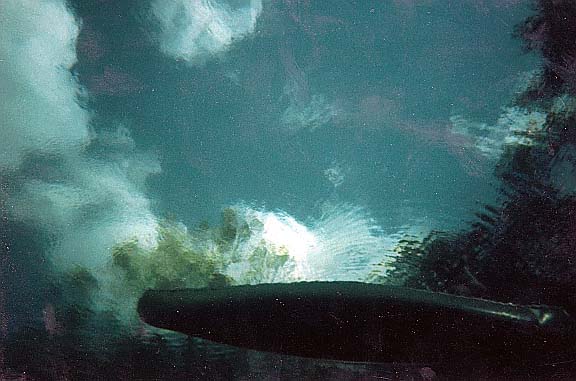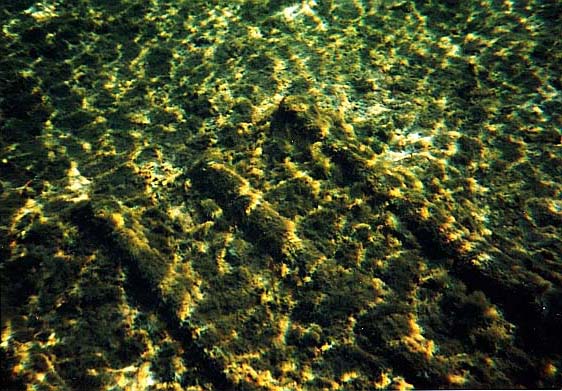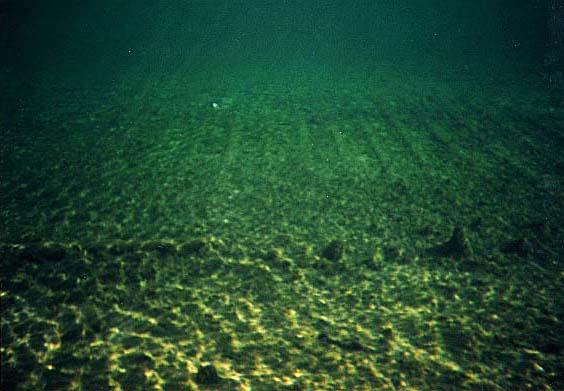Troy Spring
Lafayette County
Summary of Features
- Scale -1st magnitude
- Scenery - excellent
- How Pristine? - houses and cleared land near spring
- Swimming - outstanding
- Protection - fine
- Crowds - small
- Access - fine, by land or boat
- Facilities - none
- Safety - fine
- Scuba - yes, $10 fee
- Cost - $5 per group of up to 8; $4 for car with one person
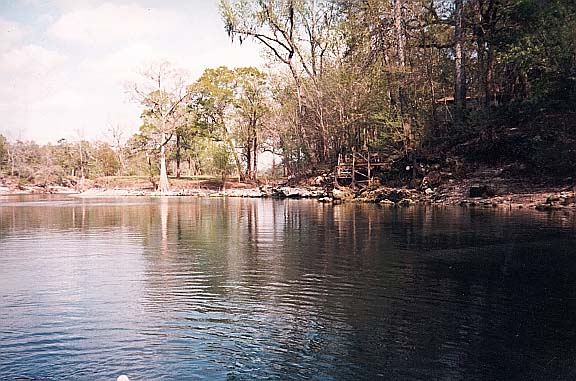
Directions: Address is 674 NE Troy Springs Rd, Branford, FL 32008; 386-935-4835. Web site: www.floridastateparks.org/park/Troy-Spring
Troy Springs is located 6 miles NW of Branford and 13 miles southeastof Mayo off US Hwy 27 and County Road 425. Look for and follow signs to the park.
Spring Description
Troy Spring forms a large oval pool about 100 feet wide and 200 feet long. Water flows from the bottom of a dramatic limestone wall near the back of the pool at a depth of 75 feet. The spring flows from a cave system. The wall is nearly vertical and parallel to the river. The spring run beyond the limestone shelf is 5-10 feet deep in times of normal river heights. Besides the main spring, there is another small vent in the run on the downstream side near a dock. Limestone boulders are visible when the water is clear.
At the lower end of the run lie the keel timbers/ribs of the 19thcentury steamship, Madison, which was purposely sunk in the run during the Civil War to prevent it from falling into Union hands. The ribs resemble railroad ties. There is a dock and a house on the south side of the spring. A limestone tunnel of about 20 feet in length is located near the dock.
At the back end of the spring is a large limestone boulder that rises several feet above the water except at times when the river is high. The area directly behind the spring is swampy flood plain, and the other sides of the spring have high natural banks and are thinly forested. The small stagnant stream/slough that flows into the back of the spring seems to be a natural drainage for the surrounding land.
The clarity of the spring varies with the height of the adjacent Suwannee River. In times of low water and dry weather, the water can be very clear and blue. At other times, the spring is just as dark as the river. Gar, other fish, turtles, and alligators may be seen in the spring and its run.
Use/Access
- Troy Springs State Park covers 83.59 acres and includes significant archeologicaland historical sites.
- The park offers a range of activities to include camping, lodging in cabins, swimming, canoeing, fishing, biking, hiking, horse trails boating, boat tours of the spring, and birding.
- The spring is excellent for scuba, snorkeling, swimming, and wading and is popular with boaters.
- Over time, swimmers and divers have chipped away at the remains of the Madison, leaving little left of the 19th century steamer.
- The spring can be crowded with boats on warm weekends.
Local Springiana
The information below is derived from "The History of Troy Springs, Lafayette County, Florida," by Wheeler & Newman, 1996 (www.roots.web.com/~flafaye/troysprings.htm).
Although there is little sign of human habitation at the spring today, people have used Troy Spring for at least 2,500 years, according to archeologicaland historical records. Three aboriginal cultures—Weeden Island, Swift Creek, and Wakulla—left behind evidence of their habitation and/or use of the spring through pottery shards, burial offerings, and hunting implements. Later, Alachua, Suwannee Valley, Indian Pond, Creek, and finally Seminole Indians utilized the spring and adjoining river before being wiped out by diseases, removed, killed, or forced out by European and American cultures.
When Lafayette County was incorporated in 1856, the already existing town of Old Troy was named as its county seat. The town burned to the ground in the 1850s or 1860s. The location of the original town has not been determined with precision, but it was certainly near the spring. By 1860, the town of New Troy was established and remained the county seat until its courthouse burned in 1892 and Mayo was made the county seat shortly thereafter. Between 1860 and the demise of New Troy after the courthouse fire, New Troy wasa thriving community with a mill, churches, shops, jail, newspapers, cotton gin, and a steamboat and ferry landing.
The steamboat, Madison, which had served the region for years as a floating general store, was scuttled in 1863 in the spring upon the order of its owner, James Tucker. The Madison had been used since 1861 as a privateer and jerry-rigged gunboat for the Confederate forces, and had commandeered four Union supply vessels. Tucker and his crew went north to fight in Virginia.
Personal Impressions
Troy is a superlative spring, rich in scale, flow, beauty, recreational opportunities, and history.
Nearby Springs
Suwannee Blue, Royal, Bathtub, Convict, Owens, Mearson, Ruth, Little River, Sulfur, Shingle, Branford, Cow, Running
Other Nearby Natural Features
- Suwannee River State Park
- Itchetucknee River State Park
